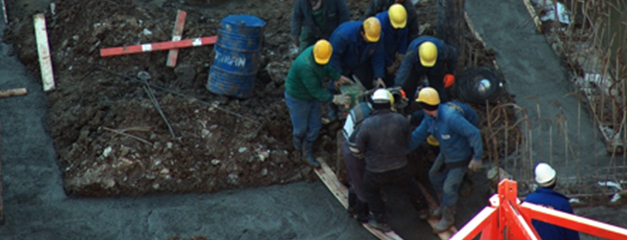Getting the right environmental insurance protection
Environmental insurance is increasingly used in property and corporate transactions – from basic indemnity policies for failed desktop reports to comprehensive historical pollution and contractor risk policies in development projects. This note summarises the different scenarios where insurance can play an important role in mitigating liability risks.
When environmental insurance should be discussed?
Contaminated land in transactions is often like a lottery where one party is asked to provide an uncapped indemnity for unknown and unquantified clean up liabilities.
If an environmental report identifies concerns or there is knowledge of high risk contaminative land uses, insurance should be considered -particularly in the following scenarios:
- Desktop report recommends further action
- Offsite migration risks eg underground storage tanks or landfills
- Stalemate over which party should provide an environmental indemnity
- Concerns over environmental indemnity covenant strength
- Seller wants a clean break from environmental indemnities
- Construction activities could cause mobilise existing contamination
Which type of policy is appropriate?
There are three main types of policies in transactions – indemnity policies, site pollution legal liability policies and contractor pollution liability policies.
1. Indemnity policies
- Mainly suitable for high risk desktop reports
- Responds if a regulator threatens to serve a remediation notice
- Covers remediation costs, legal fees and loss of property value
- Exclusions for civil claims, phase 2, redevelopment, storage tanks
- Policy period 15 – 25 years
- Typical premiums less than £5,000
2. Site Pollution legal liability (SPL) policies
- Comprehensive protection for onsite and offsite contamination
a) Regulatory action
b) Third party claims
c) Environmental damage
d) Contractual liabilities - Exclusions for phase 2s and no onsite cover during remediation
- Some insurers will exclude high risk known issues
- Policy period usually 5 or 10 years
- Typical premiums £40,000 to £120,000+
3. Contractors Pollution Liability (CPL) policies
- Remediation or construction disturbs existing contaminants
- Policy period 3-7 years
- Typical premiums 20% of SPL policy
Brownfield development projects
The majority of contaminated sites are investigated and remediated under planning controls at the time of redevelopment, so the risks are particularly high.
In addition to liabilities for onsite and offsite residual contamination, the remediation and construction activities can disturb the ground and mobilise existing contamination.
The seller, developer, purchaser, tenants and funder can all face ongoing environmental liabilities and the traditional solution of reliance on environmental reports provides minimal protection.
In the Sandridge case, a residential developer was found to have “caused” groundwater contamination by removing buildings and hardstanding at a former chemical site. Rainfall washed bromate contamination into the underlying chalk aquifer resulting in a 20km groundwater plume and £13million clean up and £20m ++ compensation to damaged parties (such as the water company).
For brownfield development sites it is necessary to consider both Site and Contractor Pollution products.
For site specific advice and to get the right protection, a combination of environmental lawyer and specialist broker advice is required.
- Environmental liability analysis and tactics
- Interpreting environmental reports and indemnities
- Approaching insurers with greatest appetite for the particular risks
- Environmental insurance summary report to recommend the best policy
- Negotiating policy wording
- Summary of insurance policy coverage

